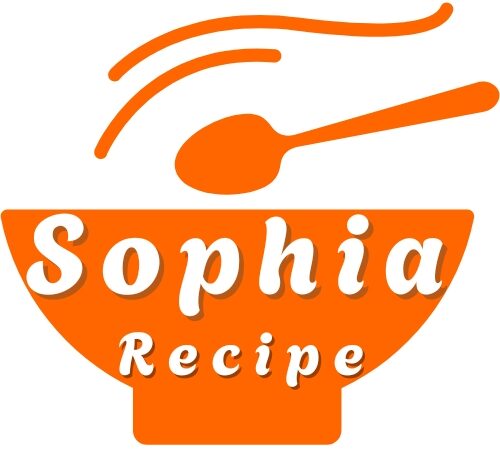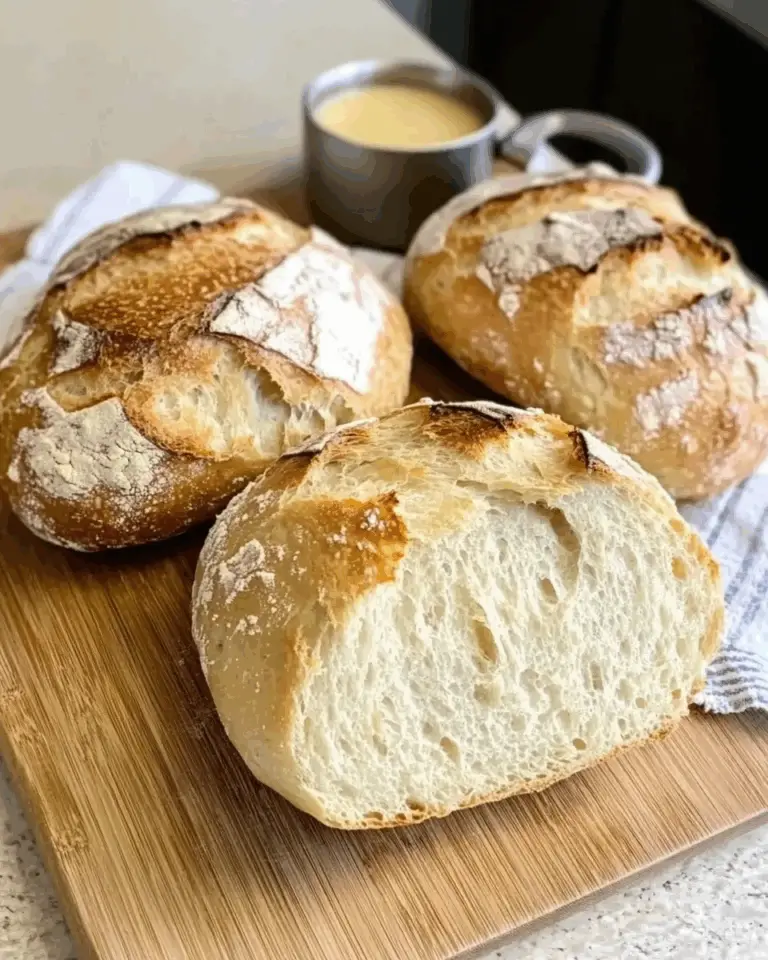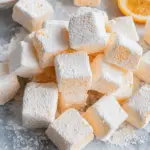The Appeal of No-Knead Bread
One of the biggest advantages of this recipe is its no-knead method, which revolutionized home baking when it was popularized by professional bakers and food writers in the early 2000s. Rather than relying on physical kneading to develop gluten (the protein structure that gives bread its chew), this dough develops structure through hydration and fermentation. The longer resting period allows the flour to fully absorb the water, and the yeast to work slowly, producing air pockets and flavor.
This hands-off method makes it ideal for anyone who’s short on time or intimidated by traditional bread-making techniques. You don’t need to flour your countertop, use a stand mixer, or master the “windowpane test.” Just stir the ingredients together and let time do the work.
A Versatile Foundation for All Occasions
This crusty bread is endlessly versatile. Its neutral flavor profile and chewy interior make it a perfect companion for a wide range of dishes and occasions. Serve thick slices alongside hearty soups and stews, use it as a base for avocado toast, or build gourmet sandwiches with roasted vegetables, meats, or cheeses. Its firm crust also holds up beautifully for dipping in olive oil, balsamic vinegar, or marinara sauce.
You can also turn this bread into something sweet or savory with minimal effort. Mix in rosemary and sea salt for a herbed variation, chopped olives or sun-dried tomatoes for a Mediterranean twist, or even raisins and cinnamon for a breakfast loaf. The base dough is forgiving and strong enough to accommodate additions without compromising structure.
Why Use a Dutch Oven?
The key to the incredible crust on this bread lies in the use of a Dutch oven. This heavy, lidded pot acts as a miniature steam oven. When the dough goes into the preheated Dutch oven, the moisture in the dough turns into steam. This steam gets trapped under the lid, keeping the surface of the dough moist just long enough to allow for oven spring—the rapid rise that occurs during the first few minutes of baking. Then, removing the lid allows the crust to dry out and develop a deep golden color and satisfying crunch.
If you’ve ever struggled to get that bakery-style crust at home, the Dutch oven method is the most reliable trick in the book.
Ingredient Simplicity with Big Results
This recipe is the perfect example of how simple ingredients can yield extraordinary results. With just flour, water, yeast, and salt, you get a flavorful, chewy, golden-crusted loaf that requires no additives, conditioners, or preservatives. It’s a wholesome and cost-effective alternative to store-bought bread, and you control every aspect of the process—from the flour type to the salt content.
The yeast does double duty here, both leavening the bread and contributing to its flavor. Quick-rise instant yeast makes the process fast and efficient, ensuring consistent results. The salt not only enhances flavor but also helps to control fermentation and strengthen the dough’s gluten network.
The high hydration of this dough also creates an open crumb structure, which means large, irregular holes throughout the loaf—another hallmark of artisanal bread. It’s perfect for catching melting butter or olive oil in every bite.
Bread for Every Skill Level
Whether you’re a first-time baker or someone who’s baked a dozen loaves, this recipe is an excellent addition to your repertoire. It’s reliable and forgiving, making it the ideal “gateway bread” for beginners who want to dip their toes into breadmaking without committing to complex techniques or specialized tools.
And while the process includes a rise time and some resting, most of the work is passive. You don’t have to babysit the dough or shape it precisely. Even if your loaf isn’t perfectly round or symmetrical, it will still taste amazing. In fact, part of the charm of rustic bread is its imperfect, homemade look.
This makes it a great project for kids, too. It’s a wonderful way to introduce children to the magic of yeast and the joy of homemade food.
Storage and Serving Tips
This crusty bread is best enjoyed fresh the day it’s baked, when the crust is at its crunchiest. However, it also keeps well for 2–3 days if wrapped in a kitchen towel or stored in a paper bag (avoid plastic, which softens the crust).
To revive the crust, pop the bread into a 350°F oven for 5–10 minutes before serving. You can also slice and freeze the loaf, then toast or reheat individual slices as needed.
Pair it with soups like tomato basil or creamy potato leek, use it to mop up pasta sauces, or toast slices for bruschetta topped with tomatoes and basil. It also makes fantastic croutons or breadcrumbs once it’s a day or two old.
Nutrition and Health Benefits
Though bread often gets a bad rap in low-carb circles, this homemade crusty bread can be part of a healthy diet, especially when made from scratch. Each slice offers a good source of complex carbohydrates, a bit of protein, and minimal fat. There are no added sugars or preservatives, and the fermentation process even helps make the gluten more digestible for some people.
Additionally, when paired with healthy toppings like avocado, lean protein, or hummus, this bread becomes a nutrient-rich foundation for balanced meals.
For those wanting to boost the nutrition further, try replacing some of the all-purpose flour with whole wheat or rye flour. You can also experiment with adding seeds like flax, sesame, or sunflower for more fiber and texture.
Conclusion
Crusty Bread is a must-try recipe for anyone who loves the aroma, taste, and satisfaction of freshly baked bread. With its minimal ingredient list, no-knead method, and stunning results, this bread delivers artisan quality without the intimidation factor. Whether you’re a baking newbie or a seasoned home cook, this loaf belongs in your kitchen repertoire.
It’s versatile, affordable, and deeply comforting—something that brings people together, elevates simple meals, and reminds us of the joy of slow, mindful cooking. As it crackles while cooling on your counter, you’ll realize that the best bread doesn’t have to come from a bakery. It can come from your own oven.






